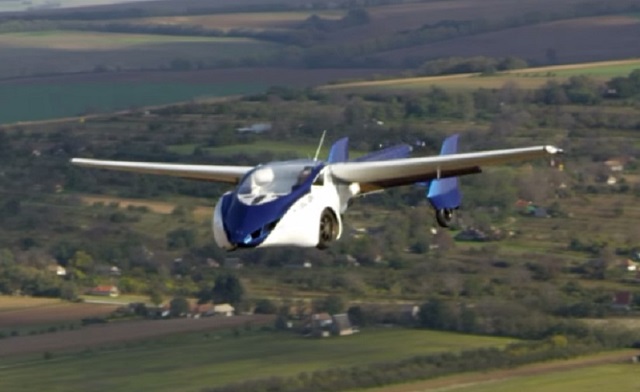
Le Bourget, France | AFP | Aeronautics giants are treating the idea of a flying car with caution, as such a project raises more questions than it answers, experts say — it’s a child’s dream, a millionaire’s toy.
But is it really the next big thing in transport?
At this year’s Paris Air Show, you had to search hard to find an aircraft that looked anything like an automobile: but one such model, the AeroMobil, was tucked away under the old Concordes at the Air and Space Museum, just outside the capital.
This strange-looking hybrid, with its bulbous nose and retractable wings, designed by a Slovakian company, is scheduled to go into series production by 2020.
“After you’ve landed at an airport, you transform the plane into a car and take the road to wherever you want,” Simon Bendrey, AeroMobil’s deputy head of engineering, told AFP.
And they have already received a number of orders, he added, despite an asking price of 1.2-1.5 million euros ($1.3-$1.8 million).
While flying cars have starred in films including Chitty Chitty Bang Bang and the Fifth Element, the race to turn such dreams into a reality is being run by dozens of small creative start-ups like AeroMobil.
– Quantum leap –
Among those nearest to take-off is the Dutch outfit PAL-V, which is offering a two-seater gyrocopter and is scheduled to be available by next year — a steal at 300,000 euros.
Czech company Nirvana Systems says it has had dozens of orders for its mini-helicopter, which can also travel on roads, albeit at rather sluggish ground speeds.
Silicon Valley-based company Kitty Hawk says its Flyer will be on sale by the end of the year.
And just last week France’s Pegase, a cross between a ultra-light plane and a mini-car, crossed the Channel, the narrow stretch of water between England and France.
Until recently, flying cars “were a cross between a bad car and a bad plane,” said Bruno Sainjon, head of the French aerospace lab ONERA, on the sidelines of the Paris Air Show.
But there has been a quantum leap in design thanks to vast improvements in the power of electric propulsion, linked largely to the rapid advances in drone technology recently.
Today, such engines lift 80-100 kilos (176-220 pounds), Xavier Dutertre, director of the Techoplane project based in Normandy, northern France, told AFP.
“And we’re not far from having the capacity to transport one or two men for about 20 minutes,” he added. “In five to 10 years, that will have become commonplace.”
While driving-flying hybrids may initially be the latest must-have gadgets for the ultra-rich, experts believe that such vehicles could actually be rapidly overtaken, as the industry sets its sights on fly-only solutions further down the line.
 The Independent Uganda: You get the Truth we Pay the Price
The Independent Uganda: You get the Truth we Pay the Price


